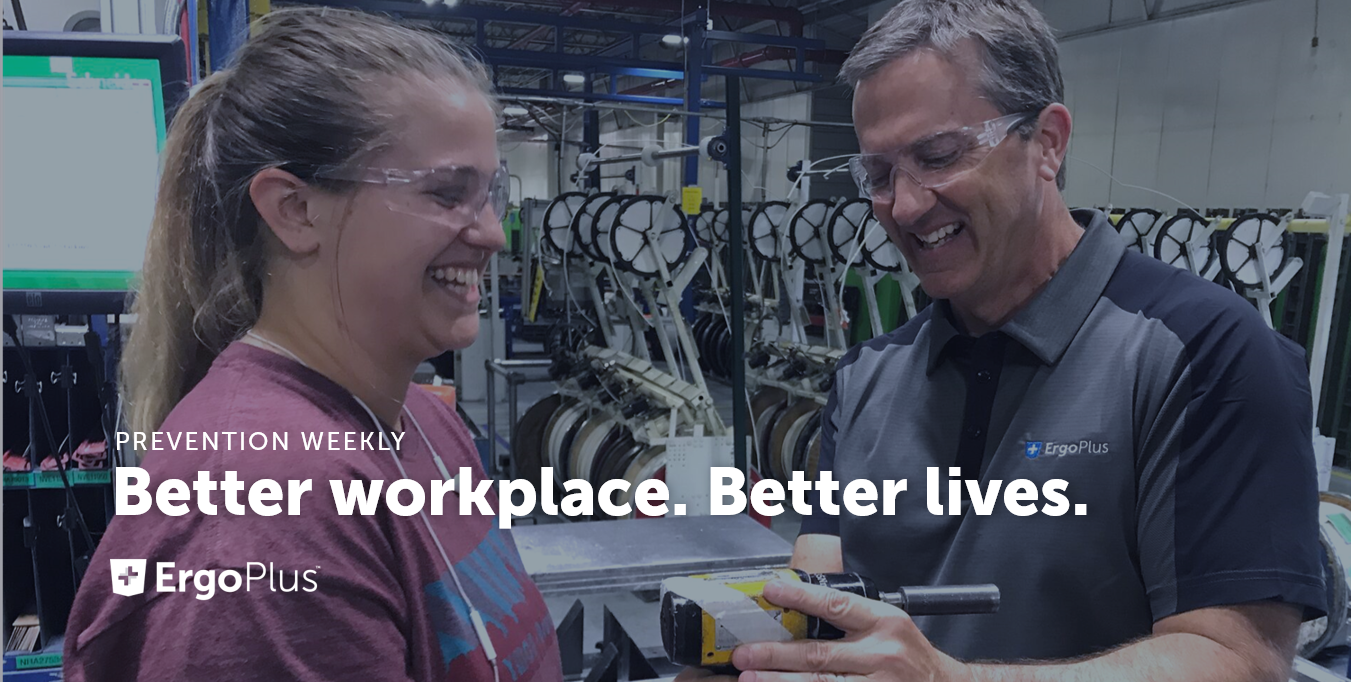
Prevention Weekly delivers the best ergonomics, workplace athlete health, and safety leadership news right to your inbox every week.
Featured Article
Injury Prevention Tip — The Softer the Anti-fatigue Mat the Better?
Workplace athletes will often request the softest anti-fatigue mats available. Is that a workplace ergonomics best practice or a mistake?
Injury Prevention Tip — The Softer the Anti-fatigue Mat the Better?
Ergonomics
Steps to a More Productive Workplace
Factors such as work surfaces at the wrong height, uncomfortable chairs, shelves and bins that are too high or out of reach and awkward hand tools all contribute to increased risk of musculoskeletal injuries and negatively can impact productivity.
Four Simple Ergonomic Steps to a More Productive Workplace
Ergonomics and Injury Prevention Guidelines
Looking for specific ergonomics and injury prevention guidance for your industry? Look no further. We’ve compiled an extensive library of industry-specific ergonomics and injury prevention guidelines on this page. (In fact, you might consider bookmarking this page for future reference.)
Ergonomics and Injury Prevention Guidelines
Workplace Athlete Health
Ergonomics and Injury Prevention Strategies for an Overweight and Obese Workforce
Is the increasing prevalence of overweight and obese workers in the U.S. workforce an Occupational Health & Safety epidemic?
Ergonomics and Injury Prevention Strategies for an Overweight and Obese Workforce
The Causes of Musculoskeletal Disorders (MSDs)
The only way to prevent something is to know what caused it, understand what caused it and then systematically eliminate those causes. This is a foundational lesson because it is so vitally important that you understand what causes MSDs. This is where we see safety leaders get mixed up, and then spend precious resources trying to fix a problem they don’t fully understand.
The Causes of Musculoskeletal Disorders (MSDs)
Safety Leadership
Safety First: Oh, the Irony!
There is a difference in doing it right versus right now, and no plan is ever perfectly first conceived. If it was easy, most occupational injuries would already have been eradicated. Data must be leveraged and contingency plans considered. This takes time. If we want safe work, we must be deliberate in our actions. If we want safety excellence, we must also be deliberate in our plans to get there.